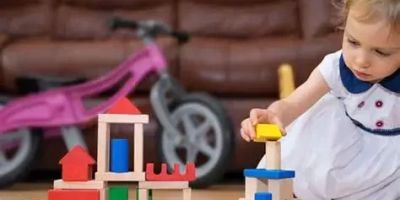
How I Got Into Cosplay Prop Making in the U.S.
Back when I first stepped into the vibrant world of cosplay, I never thought I’d be building my own props from scratch. I remember attending my first Comic-Con in San Diego, amazed by the creativity and craftsmanship of fellow cosplayers. One moment stuck with me: a woman dressed as Mercy from Overwatch wielding a fully lit, retractable Caduceus staff she built herself. That was the moment I knew—I wanted to create my own props, not just wear them.
I live in the U.S., where finding good cosplay prop making kits can be both a blessing and a challenge. There's an abundance of tools and materials, but figuring out what works best takes time, trial, and a lot of duct tape. This article is for anyone like me—someone who wants to build, craft, and wear their fandom with pride using the right cosplay prop making kits.
1. What Makes a Great Cosplay Prop Making Kit?
Whether you’re just getting started or have a few builds under your belt, the quality of your kit can make or break your project. I’ve tested dozens of kits over the years—from online marketplaces to specialty stores across the U.S.—and learned what separates the gimmicky from the truly game-changing.
1.1 Core Components You Should Always Look For
Most high-quality cosplay prop making kits should include:
- Heat-formable materials like EVA foam or Worbla
- Cutting tools (precision knives, scissors, foam cutters)
- Adhesives (contact cement, hot glue guns, double-sided tapes)
- Paints and sealers (acrylics, Plasti Dip, primer)
- Optional add-ons: LED light strips, batteries, 3D printed parts
Each kit may vary depending on its focus—armor building, weapon crafting, or general props—but these essentials are must-haves for any serious builder.
2. My Favorite U.S.-Based Cosplay Prop Making Tools and Materials
Living in the U.S. gives me access to a ton of great local suppliers. Here are some of the materials and tools I rely on regularly:
2.1 EVA Foam Sheets
These are the backbone of most of my armor builds. Easy to cut, heat-form, and shape, EVA foam is incredibly versatile. I usually buy the high-density 6mm variety for chest pieces and thinner 2mm sheets for detailing.
2.2 Contact Cement vs Hot Glue
Contact cement is my go-to for permanent bonds, especially for foam armor. Hot glue works in a pinch but doesn’t hold up as well over time or in heat (trust me, I’ve had shoulder armor fall off mid-convention—never again!).
2.3 LED Kits for Light-Up Effects
Adding LED lighting turned my basic Master Sword replica into a show-stopper. Most kits come with pre-soldered strips and battery packs. If you're new to electronics, don’t worry—many U.S. suppliers offer plug-and-play systems that don’t require soldering.
3. Common Challenges and How I Solved Them
Over the years, I’ve run into my fair share of obstacles. From materials melting in the car trunk on a hot California day to costume pieces not surviving airport travel, I’ve learned to adapt. Here’s what worked for me:
3.1 Durability on the Go
For conventions that require travel, I reinforce props with internal PVC piping or lightweight wooden dowels. I also learned to pack bubble wrap and foam between components to prevent chipping or warping during transit.
3.2 Weatherproofing Props
I once wore a Fallout power armor suit in the rain, which completely soaked through. After that, I started using waterproof coatings like clear Plasti Dip and sealant sprays to protect paint jobs and foam integrity.
3.3 Staying on Budget
Cosplay can get expensive fast. To save money, I started buying prop kits in bulk from U.S. wholesalers or waiting for Black Friday deals. I also recommend checking local hardware stores for generic tools that work just as well as “branded cosplay” items.
4. Tips for First-Time Prop Builders
If you're just starting out, my biggest advice is this: don’t aim for perfection on your first try. I’ve built swords that looked more like bananas and helmets that barely fit my dog, let alone me. But every failed attempt taught me something valuable.
4.1 Start with a Small Project
Instead of diving into a massive Iron Man suit, consider starting with a dagger, a mask, or a handheld prop. These smaller builds let you practice cutting, shaping, painting, and detailing without overwhelming yourself.
4.2 Join Local and Online Cosplay Communities
Facebook groups, Reddit threads, and Discord servers are filled with U.S.-based builders who love sharing tips, troubleshooting, and feedback. I met some of my closest cosplay friends that way, and we’ve even collaborated on multi-character builds.
5. Why the Right Kit Changes Everything
When I finally invested in a professional-grade cosplay prop making kit, my builds dramatically improved. My lines were cleaner, my paint jobs looked polished, and I finally got noticed by photographers and judges at conventions. The confidence boost was real.
So whether you're building a replica sword, a full suit of armor, or just experimenting for fun—start with the right tools. It saves time, frustration, and money in the long run. If you're in the U.S. and unsure where to begin, I highly recommend checking out kits and supplies curated by experts. For tailored recommendations, you can always check out Knight Toys for guidance on where to start your prop-making journey.





